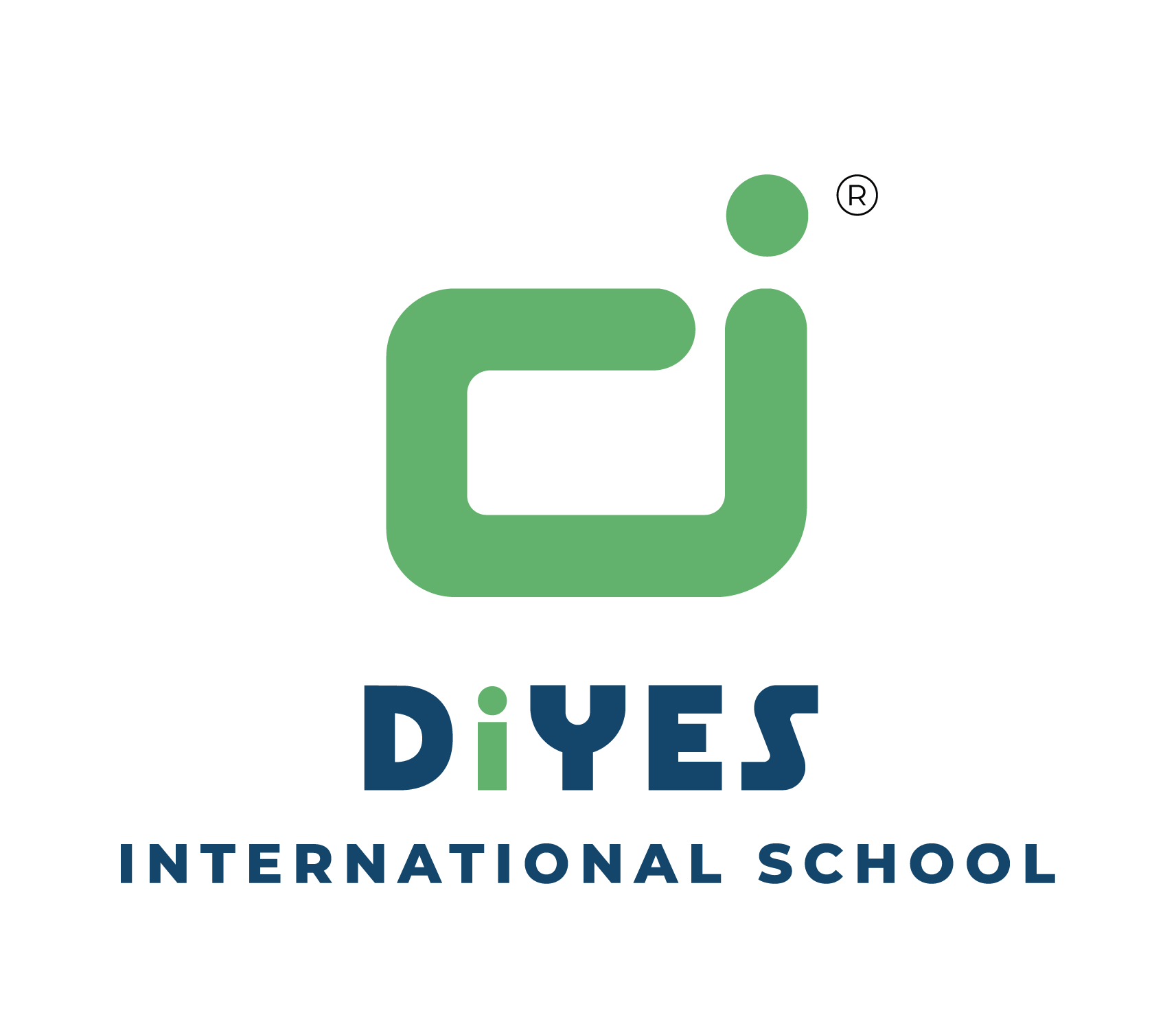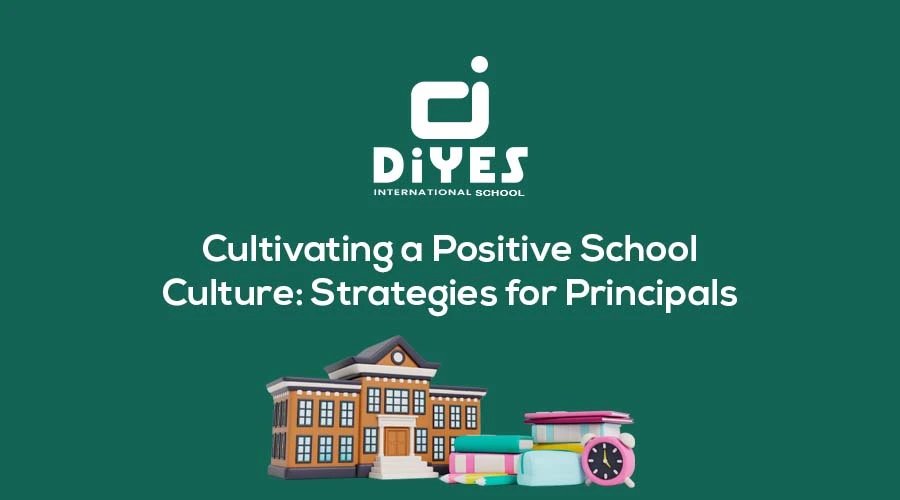In the realm of education, the impact of a positive school culture is undeniable, influencing not only academic outcomes but also shaping the overall experience for students, teachers, and the entire school community. Principals, as educational leaders, play a pivotal role in building a positive school culture. This article explores the multifaceted strategies that principals can employ to create a positive school culture, ensuring an environment where learning thrives, collaboration flourishes, and students and educators alike feel a sense of belonging.

As educational leaders, principals serve as architects of the school culture, setting the tone for the entire institution. The strategies employed by principal’s ripple through the corridors of learning, influencing attitudes, behaviours, and the overall atmosphere. From nurturing effective communication channels to promoting teacher collaboration and implementing student-centric initiatives, the role of a principal in building school culture is dynamic and impactful. They must consider how to build school culture by fostering an atmosphere that encourages positive interactions, values diversity, and prioritizes the well-being of all members of the school community.
Effective Communication Channels
Communication serves as the lifeblood of a positive school culture, and principals play a pivotal role as the architects of this communicative framework. Establishing effective channels goes beyond transmitting information; it involves cultivating transparent, two-way communication that engages all stakeholders in the school community.
- Transparent Communication: Building Trust through Openness
At the core of effective communication is transparency. Principals must prioritize keeping all stakeholders well-informed about school policies, decisions, and upcoming events. This transparent approach creates an atmosphere of trust, where every member of the school community feels connected and aligned with the shared objectives.
Transparency acts as a bridge between leadership and the school community. Principals can utilize various mediums, such as regular newsletters, official announcements, and dedicated sections on the school website, to ensure that information flows seamlessly. By keeping everyone abreast of the school’s inner workings, transparency becomes a cornerstone in nurturing unity and shared responsibility.
- Open Feedback Mechanisms: Amplifying Voices, Nurturing Collaboration
Communication is a dialogue, not a monologue. Principals should establish open feedback mechanisms that provide teachers, students, and parents with avenues to express their opinions and concerns. This can be achieved through regular surveys, suggestion boxes, or town hall meetings, creating a culture where every voice matters.
The implementation of open feedback mechanisms transforms communication into a collaborative endeavour. Principals can initiate surveys that touch on various aspects of school life, from curriculum preferences to feedback on administrative decisions. By actively seeking input, principals not only gather valuable insights but also cultivate a sense of ownership and partnership within the school community.
- Celebrating Achievements: Nurturing a Culture of Recognition
Amidst the dynamics of effective communication, celebrating achievements emerges as a powerful tool. Principals can use newsletters, school assemblies, or social media platforms to spotlight the accomplishments of students and educators. Recognizing and celebrating successes reinforces a positive culture, instilling a sense of pride and motivation.
Acknowledging achievements is more than a formality; it’s a means of affirming the collective efforts of the school community. Principals can leverage various platforms to shine a spotlight on academic accomplishments, extracurricular achievements, and commendable efforts. By doing so, they not only boost morale but also contribute to the creation of a culture where every achievement, big or small, is valued.
Effective communication channels form the fabric that weaves together a unified and proud school community. Through transparency, open feedback mechanisms, and the celebration of achievements, principals contribute to the creation of a positive school culture. This culture, nurtured by strong communication foundations, becomes a source of strength and resilience, nurturing an environment where every member feels heard, valued, and connected.
Teacher Collaboration and Professional Development
In the dynamic landscape of education, a positive school culture is intricately tied to the active engagement of educators in collaborative endeavours and ongoing professional development. Principals, as educational leaders, wield the power to shape an environment that thrives on innovation, shared learning, and a commitment to continuous improvement.
- Collaborative Planning: A Tapestry of Ideas and Best Practices
At the heart of a collaborative school culture lies the practice of collaborative planning. Principals can act as catalysts by facilitating sessions where teachers come together to share a rich tapestry of ideas, resources, and best practices.

This collaborative approach serves as more than a mere exchange of strategies; it forges a robust community of educators who collectively contribute to the growth and success of each other.
Collaborative planning sessions provide a platform for educators to go beyond individual methodologies. Teachers, drawing from their diverse experiences, can share innovative teaching strategies, discuss effective classroom management techniques, and collectively problem-solve challenges. This collaborative synergy not only enhances the quality of teaching but also nurtures a sense of camaraderie among educators.
- Professional Learning Communities (PLCs): Sustaining the Flame of Professional Growth
The establishment of Professional Learning Communities (PLCs) within the school setting amplifies the commitment to ongoing professional development. Principals can spearhead the formation of these communities, offering teachers a structured space to delve into pedagogical discussions, analyze student performance data, and collaboratively work towards elevating educational outcomes.
PLCs provide educators with a dedicated forum to engage in meaningful professional development. Teachers, united by a shared commitment to excellence, can use PLCs to delve into research-based practices, assess the impact of teaching methodologies, and collectively explore innovative approaches to address the evolving needs of students. This intentional collaboration transforms professional development into a collective endeavour.
- Mentorship Programs: Nurturing a Supportive Network of Expertise
Mentorship programs, under the guidance of principals, serve as pillars of support within the school community. Pairing experienced teachers with those new to the profession creates a symbiotic relationship where knowledge and expertise are shared. Principals can actively facilitate these programs, ensuring that the wealth of experience within the teaching faculty becomes a cornerstone of the school’s culture.
Mentorship programs create a bridge between seasoned educators and those embarking on their teaching journey. Principals can strategically pair mentors and mentees based on subject expertise, teaching styles, or specific challenges. This intentional pairing not only provides new teachers with a source of guidance but also ensures that institutional knowledge is passed down, nurturing a culture of continuous learning.
The role of principals in nurturing teacher collaboration and professional development is pivotal. By nurturing collaborative planning sessions, establishing Professional Learning Communities, and implementing mentorship programs, principals become architects of a positive school culture. This culture, rooted in continuous learning and shared expertise, sets the stage for educational excellence and collective growth within the school community.
Student-Centric Initiatives: Nurturing Holistic Development
In the landscape of education, the well-being, engagement, and holistic development of students stand as pivotal pillars for cultivating a positive school culture. Principals, as educational leaders, play a crucial role in championing initiatives that prioritize students’ diverse needs and nurture an environment of inclusivity and support.
- Inclusive Extracurricular Activities: Nurturing a Sense of Belonging
Extracurricular activities extend beyond the classroom, offering students avenues to explore their interests and passions. Principals can spearhead initiatives to ensure these activities are inclusive, catering to a diverse range of interests and talents.

A vibrant school culture embraces the richness of diversity. Principals can actively work towards creating an inclusive extracurricular landscape that accommodates a spectrum of interests, from sports and arts to STEM-related pursuits. By doing so, every student finds a niche where they feel valued, nurturing a sense of belonging and school pride.
- Student Leadership Programs: Nurturing Empowerment and Responsibility
Empowering students to take an active role in shaping their educational journey is a cornerstone of student-centric initiatives. Principals can champion the establishment of student leadership programs that provide avenues for decision-making and participation in school initiatives.
The cultivation of leadership skills is vital for students‘ personal and academic growth. Principals can encourage the formation of student councils or leadership groups, where students actively contribute to decision-making processes. This not only imparts valuable life skills but also gives students a voice in shaping the policies and activities that define their school experience.
- Focus on Well-Being: Balancing Academic and Emotional Needs
Prioritizing student well-being extends beyond academic achievements to encompass mental health and social-emotional development. Principals can lead initiatives that create a supportive and nurturing environment, addressing the comprehensive needs of each student.
A well-rounded education takes into account not just the academic aspects but also the emotional and mental well-being of students. Principals can actively support initiatives such as counselling services, peer support programs, and awareness campaigns around mental health. By doing so, they nurture an environment where students feel seen, heard, and supported in their holistic development.
Student-centric initiatives led by proactive principals are instrumental in shaping a positive school culture. Inclusive extracurricular activities, student leadership programs, and a focus on well-being collectively build a foundation for lifelong success. By prioritizing these initiatives, schools not only enhance the overall educational experience but also contribute to the development of well-rounded and empowered individuals.
Cultivating a Positive Learning Environment
In the intricate tapestry of education, principals wield a profound influence as architects of the learning environment. The spaces they shape – both physical and emotional – play a pivotal role in defining the school culture. Cultivating an environment marked by positivity, inclusivity, and a genuine love for learning is paramount for nurturing academic flourishing among both students and educators.
- Safe and Inclusive Spaces: Nurturing Security for Academic Growth
The foundation of a positive learning environment rests on the assurance of safety, inclusivity, and an ambiance conducive to learning. Principals bear the responsibility of addressing issues like bullying, ensuring resources are available for students with diverse needs, and instilling a pervasive sense of security.
Creating an environment where students feel physically and emotionally secure is the bedrock of academic growth. Principals can spearhead initiatives that actively combat bullying, implement robust support systems for students with diverse learning needs, and institute measures that ensure every student feels welcomed and valued.
- Recognition of Diversity: Unveiling the Tapestry of Unity in Diversity
Every school is a microcosm of diverse cultures, backgrounds, and perspectives. Principals, as leaders, play a crucial role in recognizing and celebrating this diversity. Programs and events designed to showcase various cultures within the school community contribute to nurturing a sense of unity in diversity.

Diversity is not just acknowledged but celebrated in a positive learning environment. Principals can initiate cultural exchange programs, multicultural events, and awareness campaigns that promote understanding and appreciation among students. The recognition of diverse perspectives enriches the overall learning experience, preparing students for a globalized world.
- Supportive Discipline Policies: Nurturing Growth through Restorative Practices
Discipline is an integral aspect of the learning environment, and principals can shape policies that are not punitive but restorative. A supportive approach to discipline ensures that students, when faced with challenges, feel understood, supported, and encouraged to learn from their mistakes.
Principals can champion restorative practices that focus on resolving conflicts and addressing behavioural issues through dialogue and understanding. This approach emphasizes learning from mistakes rather than punitive measures, creating a culture where students are not only accountable for their actions but also provided with opportunities for growth and improvement.
Principals stand as custodians of the academic ecosystem, shaping environments that profoundly impact both students and educators. Cultivating a positive learning environment involves not only addressing physical safety but also recognizing and celebrating diversity while nurturing growth through supportive discipline policies. As principals embrace these principles, they pave the way for an educational milieu where every individual can thrive, learn, and contribute positively to the collective learning experience.
Conclusion
In the complex fabric of education, principals play a pivotal role as influential contributors, moulding the texture of a positive school culture. By prioritizing effective communication, promoting teacher collaboration and professional development, championing student-centric initiatives, and cultivating a positive learning environment, principals create a foundation for academic success and holistic development.
In addition to these core pillars, the role of principals extends beyond the routine responsibilities. They serve as visionaries, inspiring both educators and students to reach new heights. A visionary principal nurtures a sense of purpose, encouraging a shared commitment to excellence. This commitment ripples through the school community, creating an atmosphere where aspirations are met with encouragement, challenges with resilience, and achievements with celebration.
Furthermore, the impact of a positive school culture is far-reaching. It transcends the academic journey, influencing students’ character development and preparing them for the complexities of the future. A school culture crafted with care becomes a haven where students not only absorb knowledge but also imbibe values, ethics, and a passion for lifelong learning. The seeds planted by dedicated principals blossom into a garden of well-rounded individuals ready to contribute meaningfully to society.
In conclusion, the efforts of principals in shaping a bright future for students are akin to architects designing a masterpiece. As they weave the threads of effective communication, collaborative learning, student-centric initiatives, and a positive environment, they lay the groundwork for an educational haven where each student can flourish academically, emotionally, and ethically.
At DiYES International School, we recognize the pivotal role of school leaders in shaping a positive learning environment. Our commitment to nurturing a positive school culture goes hand in hand with our dedication to providing quality education.
Discover the enriching educational journey offered at DiYES International School by exploring our website www.diyesinternational.edu.in or reaching out to us at +918547609000.
In this collaborative journey of education, principals stand as beacons of inspiration, guiding students towards a future filled with promise and potential. Together, let’s shape a learning environment where students not only excel academically but also flourish as confident, empathetic, and well-rounded individuals.


